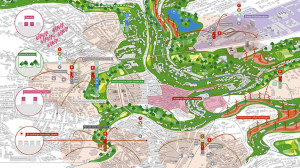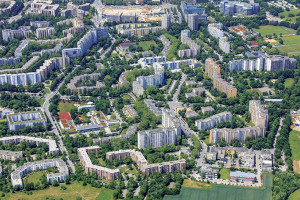THE RELATIONSHIP BETWEEN ANTHROPIC AND NATURAL SPACE IN A PROJECT FOR REBALANCING THE TERRITORY
Flavia Magliacani
The interest in the “vast scale of dwelling” brings a greater responsibility toward the entirety of the “territory as a common good”, placing the accent on rediscovering the urban nature of the territory and the territorial nature of the city. Between 1990-2000, the emergence of disciplines linked to the landscape and the discussions of the Territorialists also consented a new way of approaching local heritage and “place”, re-establishing a relationship between the forms of human settlement and geography. This approach was not without decisive concrete results. It is enough to remember how, in the debate on the fate of our spaces monopolised over the past twenty years by the paradigm of the dense and compact city, we often forgot how the city and its non-self – the territorial context in which it is situated – are intimately linked by an inevitable sense of reciprocity that is not necessarily hostile toward the search for a greater sustainability of dwelling. Despite this, the question of the “sustainability” of future settlement inserted within the framework of this renewed look at the entirety of our territorial reality, has in the end fully exposed a twofold necessity: on the one hand that of confronting “problems at the large scale”, oriented toward an integrated and organic reorganisation of the territory; on the other hand, that of implementing an inter-scalar perspective from which we can read and interpret and through which we can plan and design.






